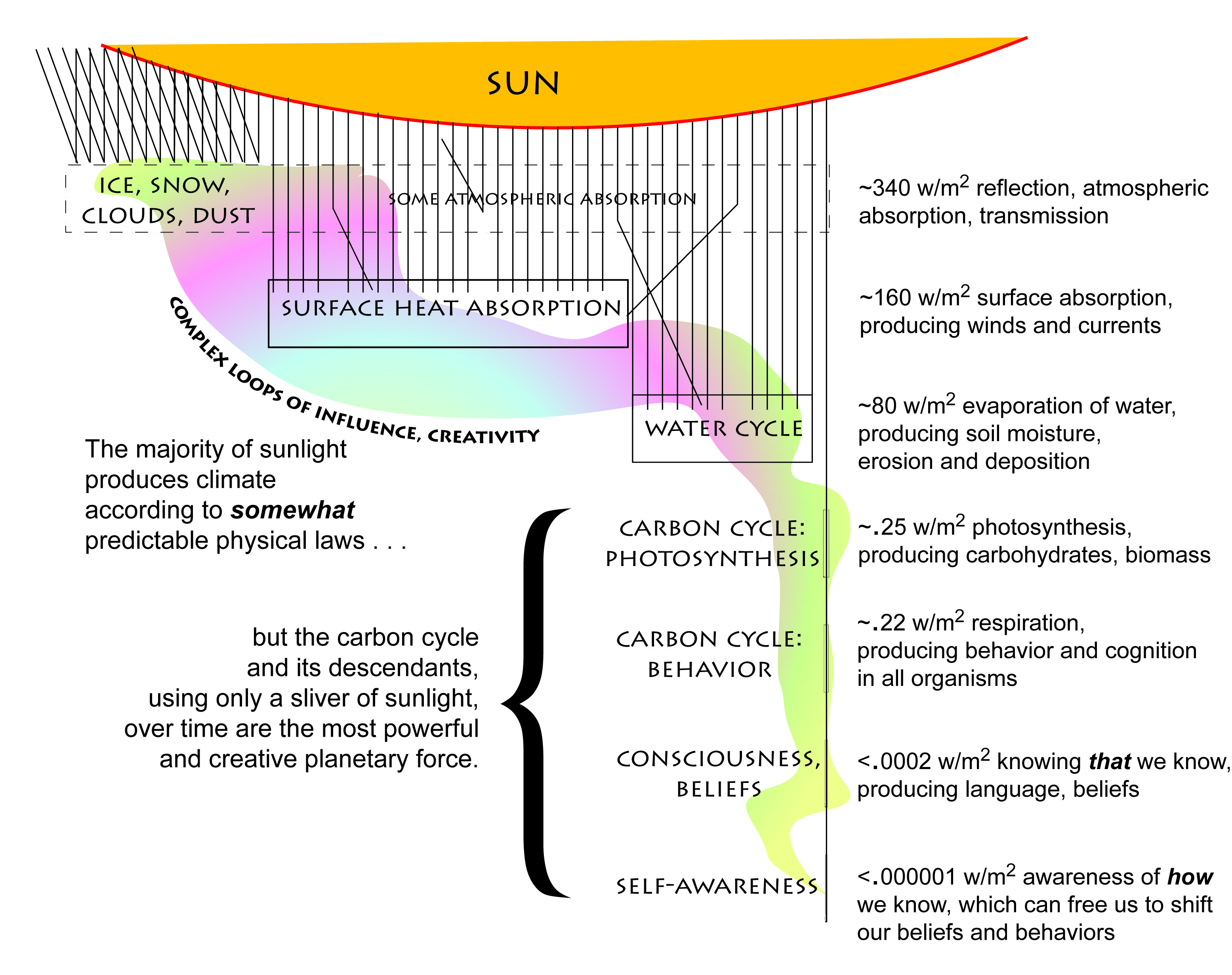
The Soil Carbon Coalition is a nonprofit organization working to advance the practice, and spread awareness of the opportunity, of turning atmospheric carbon into water-holding, fertility-enhancing soil organic matter and humus. We are doing this by identifying the successes of local leadership via time-series monitoring, with open data. We want to help facilitate a shared and shareable intelligence on landscape function, so that communities can take informed responsibility for soil health and the function of their watersheds.
As Vernadsky realized about 100 years ago, life (powered by photosynthesis and carbon cycling) is the most potent geologic force. Carbon cycling (which heavily influences water cycling) underlies almost all of our biggest challenges. Many now realize that humans have become a principal influence on carbon and water cycling, but our influence has been largely inadvertent, and often (e.g. changes in soil carbon in specific places) outside our awareness.
Our challenge, our opportunity, is to learn how to manage carbon and water cycling (landscape function or biological work) for the good of the whole at a variety of scales. But many of our methods, tools, and systems for learning are not well adapted to this challenge.
The center of gravity of both carbon and water cycling is soil, and soil structures such as aggregates produced by living organisms. In the U.S. since 1931 we have spent $294 billion in 2009 dollars on soil conservation through USDA alone, yet many agree that the situation has not improved and probably has worsened in many areas. As a society, we do not see what we're doing, or how to manage our businesses, agencies, institutions, and markets so as to maintain or regenerate soils.
How can we learn, given that we are working with very complex systems, lots of feedbacks, and time lags between action and response? The choices that have long been popular include: predictions based on computer models, expert advice, advocacy of best management practices, threats, policy and market incentives, and educating people harder and faster. These damage trust and lower our capacity for creative thinking and doing because they are based on power and shame. Scenarios of rapid "drawdown" of atmospheric carbon via soils, ignoring ocean buffering, have also exacerbated skepticism around "solutioneering." All this tends to preserve and protect the status quo, protect existing positional power and leadership, maintain the separation of knowing and doing, and limit our views of what's possible.
How can we regenerate soils, and who is going to do it? The starting requirement is the belief that it is possible, even practical. As Gabe Brown says, the foundation of farm profitability is soil carbon. By recognizing local, diverse, and measured examples of leadership in growing soil, we can grow and diversify this sense of possibility. Because our universities, agencies, and policy organizations are not structured or designed to do this, we began the Soil Carbon Coalition, which in 2010 initiated long-term monitoring of soil carbon change on innovative ranchers and farmers.
Above all, we are seeking participation: an expanding network of citizens, schools, conservation districts, watershed groups, environmental and ag groups to engage in monitoring change over time in the most powerful and creative planetary force. It's fun, it changes the way we see things, and we're in the process of making it easier and more accessible.
Power: 7 generations of sunlight
 |
7 generations of sunlight. Power is approximately quantified in terms of watts per square meter of earth's surface, averaged over day and night, all latitudes, all seasons. Vertical lines represent solar energy, some of which is reflected and scattered. We are not in an equilibrium system. The work of life takes our planet into a state of chemical and thermodynamic disequilibrium, which enables small forces or perturbations to have disproportionate influence. Human behaviors and beliefs, for example, have (unintentionally) changed earth's climate. We're in a sensitive system, and creation is now as well as in the past. |
How might we navigate this ladder of possibility?
"Land, then, is not merely soil; it is a fountain of energy flowing through a circuit of soils, plants, and animals." --Aldo Leopold
Recent Posts
Archive
Categories
- Events (2)
- policy and framing (22)
- ruminations (3)
Tags
- atlas (2)
Authors
- Peter Donovan (136)
- Didi Pershouse (3)